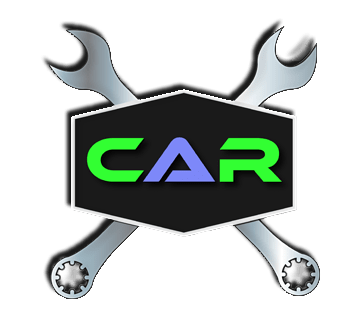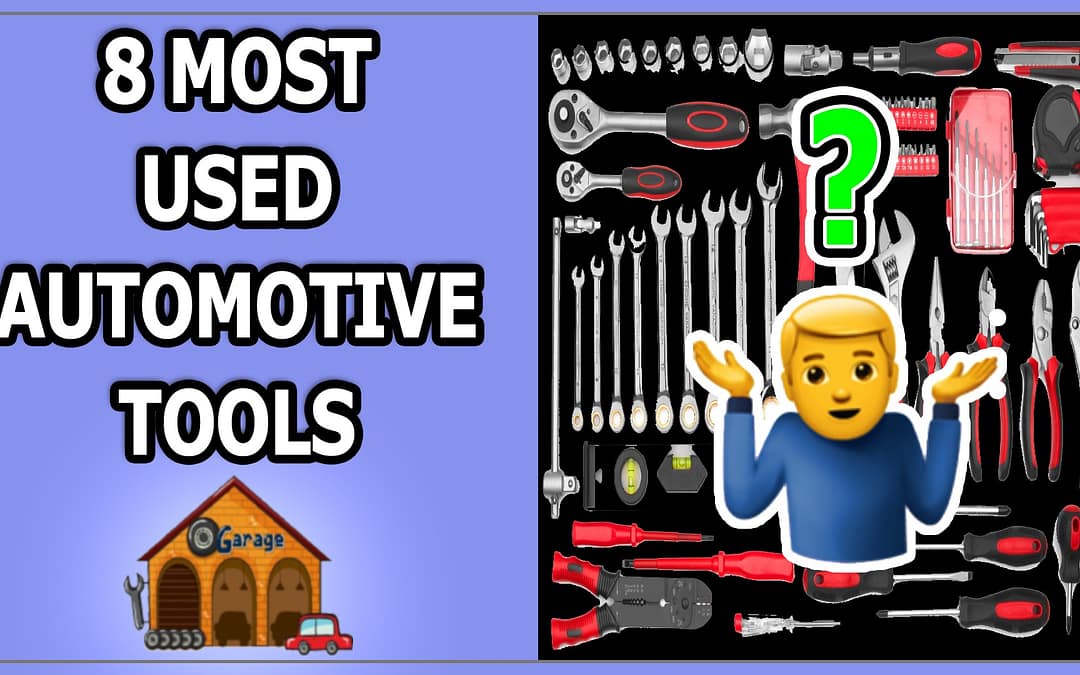✔️ Capri 3/8″ Torque Wrench ► Check Amazon
✔️ Capri 1/4″ Torque Wrench ► Check Amazon
✔️ Capri 3/8″ Torque Wrench Review ► https://www.youtube.com/watch?v=wLvjY…
✔️ Power Probe III ► Check Amazon
✔️ Fluke 87V (new version of my multimeter) ► Check Amazon
Hey, everyone. I’m out here in the garage today, and I thought I’d do a similar video to the one I just did on the home improvement side of things…and what I’m going to talk about in today’s video is the 8 tools I use the most for automotive repair and maintenance…so stay tuned.
Alright, so let’s jump right into it…in no particular order, let’s start with tool number one.
Alright, so let’s talk about ratchets…and I’m gonna lump in sockets and extensions with that, also. So, I’ve got a lot of ratchets…I have probably around 10 different ratchets that I use. I’m gonna point out the ones that I use the most and I’ll talk about some of the features of some of these other ones that I have, also.
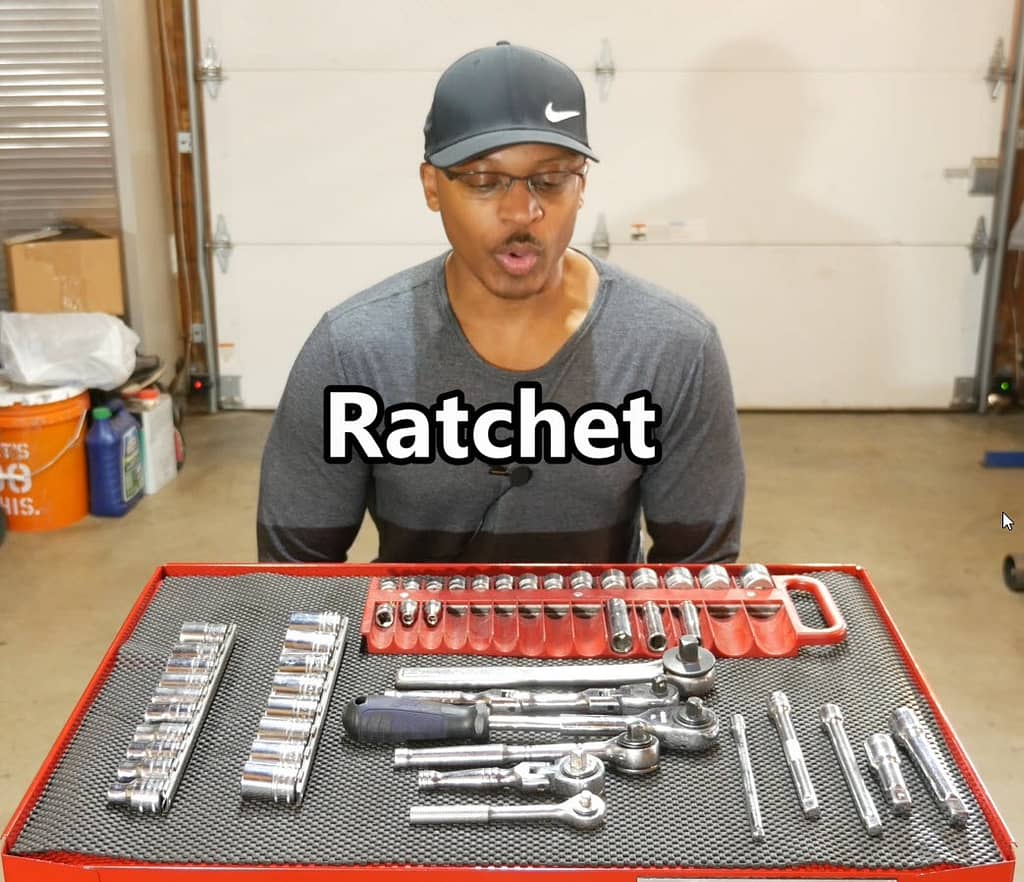
So, I’ve got a quarter inch ratchet right here…this one gets used mainly inside of dashboards or behind door panels…areas that require a smaller tool so I can get into those really tight spaces…so that’s a quarter inch ratchet
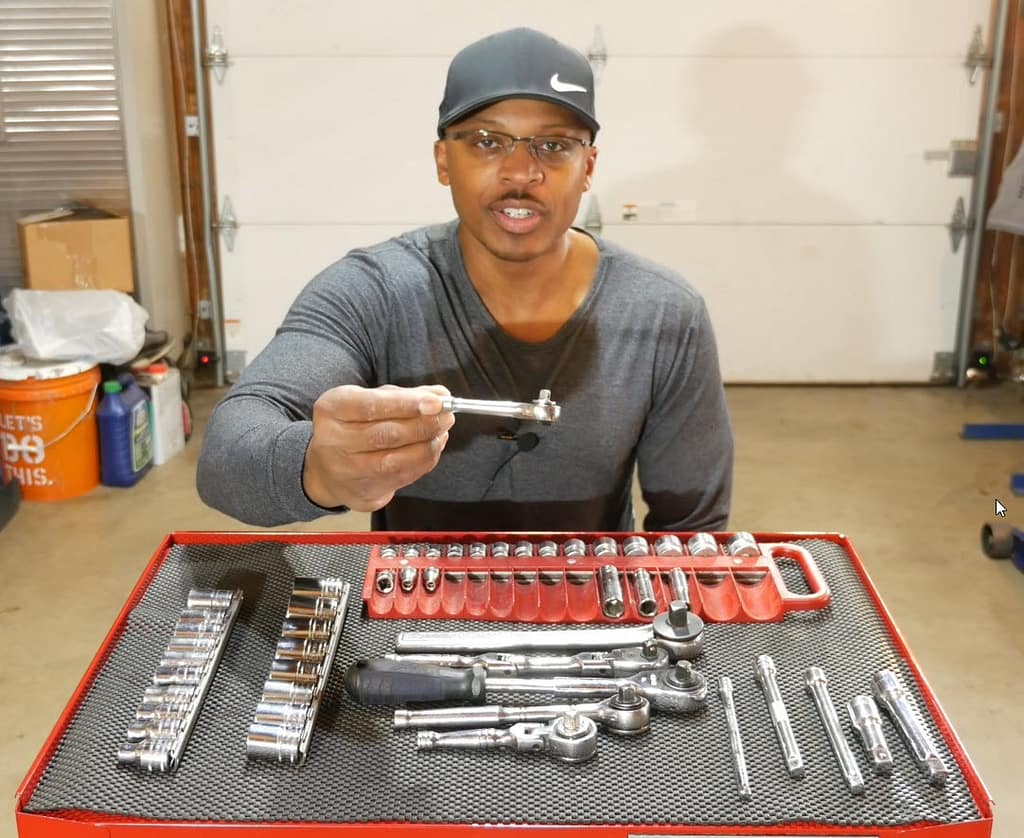
This is a stubby ratchet – 3/8 inch…and then this is the ratchet that I use the most out of all the ratchets that I have…this is a 3/8 inch ratchet…it’s your standard ratchet there. So, the 3/8 inch ratchet does just about everything I would say, with the exception of suspension components…and that’s where I jump up to the 1/2 inch ratchet…so just about anything heavy-duty I use a 1/2 inch ratchet for that.
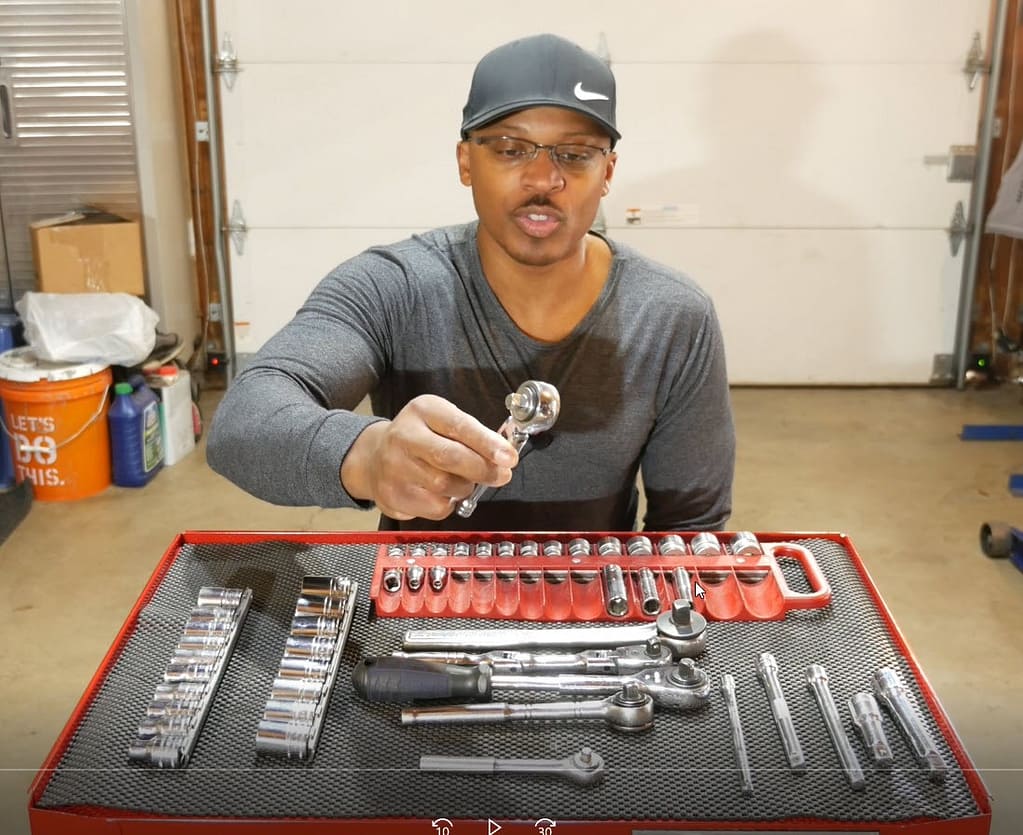
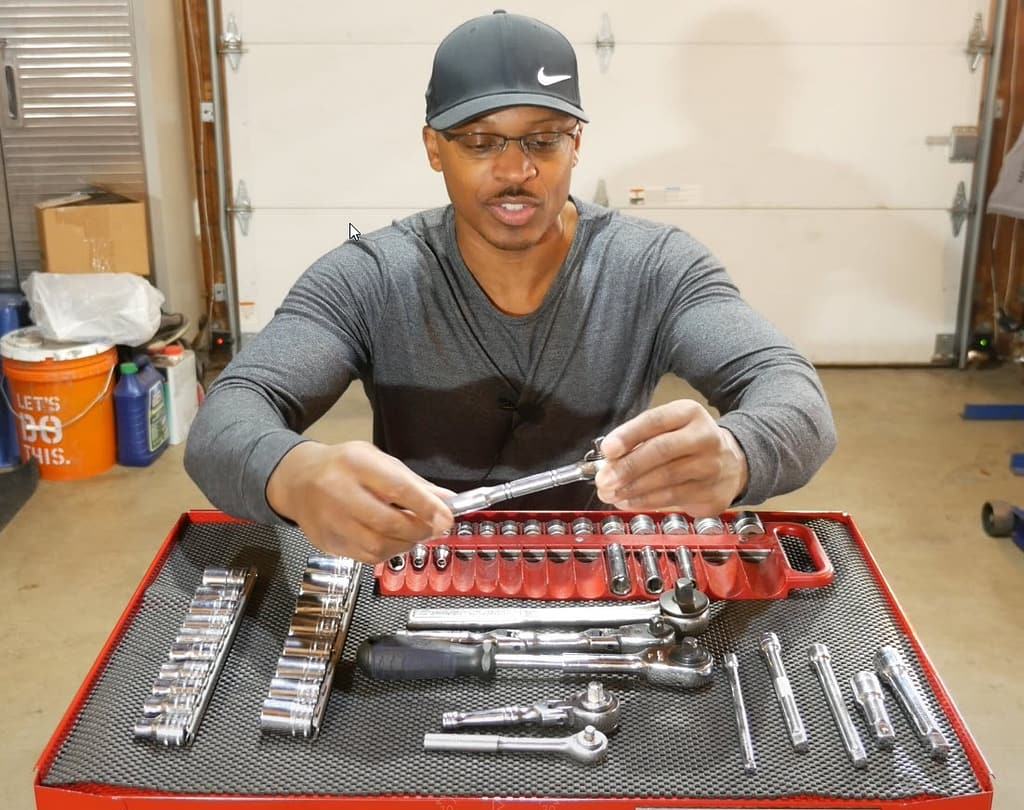
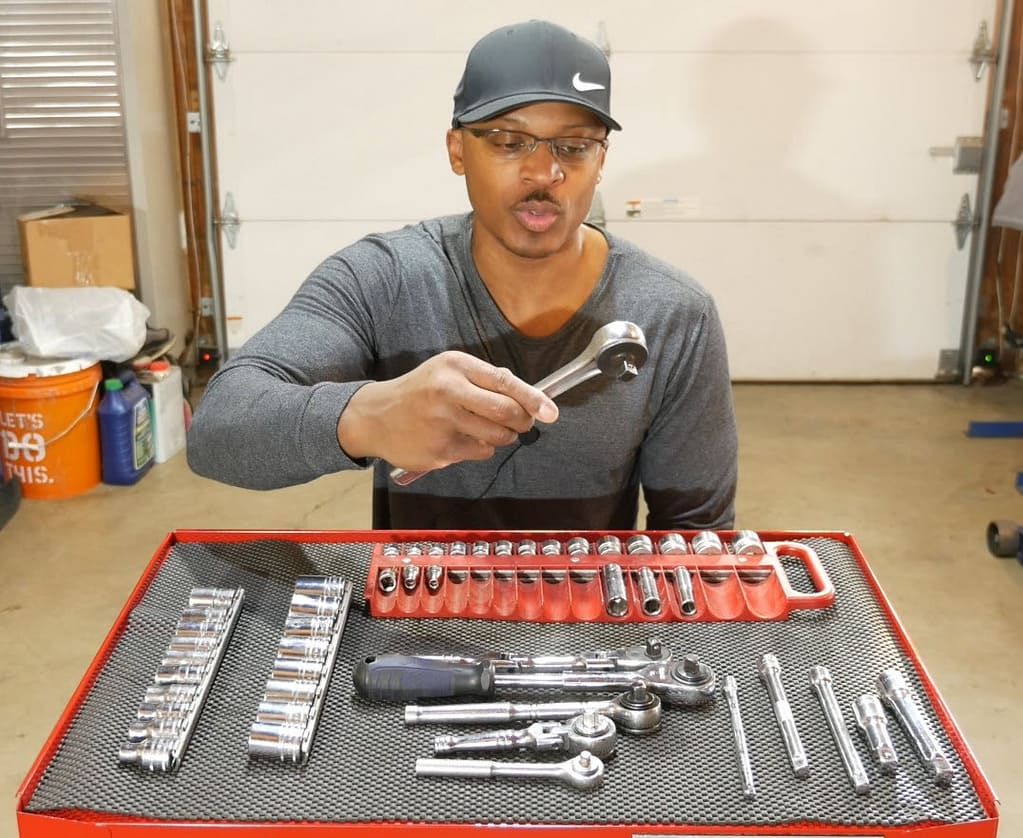
Some of the other ratchets that I have…I’ve got this one here that’s pretty cool…the shaft slides in and out and then also if you rotate this handle you can spin the head, too. So, if you’re in a really tight spot, this might work fairly well for that kind of situation.

This one is a 3/8 that articulates…that’s pretty cool to have…so over time I’ve collected all these different ratchets for different jobs that I’ve had to do on cars, and so as you can tell I’ve accumulated a lot of ratchets and they all come in handy.
Let’s jump over here to sockets…so, I’ve got some 3/8 inch sockets here…these go from 6 millimeters all the way up to 22 millimeters. So, as you’ve seen in the videos that I do, I work a lot on Honda cars, and on Nissans, and occasionally a Toyota here or there…so, that’s where the metric sockets come in.
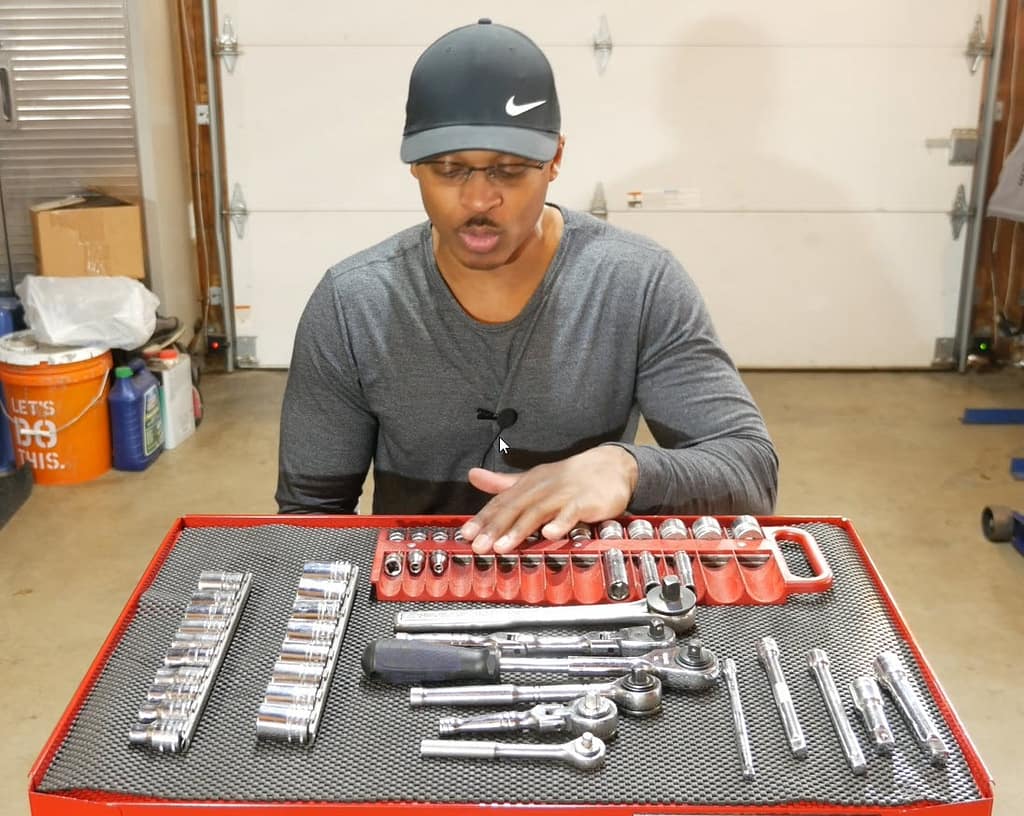
There are a few deep sockets right there…then I’ve got some half-inch sockets that go from ten millimeters all the way up to twenty-seven millimeters…so that’s sockets.
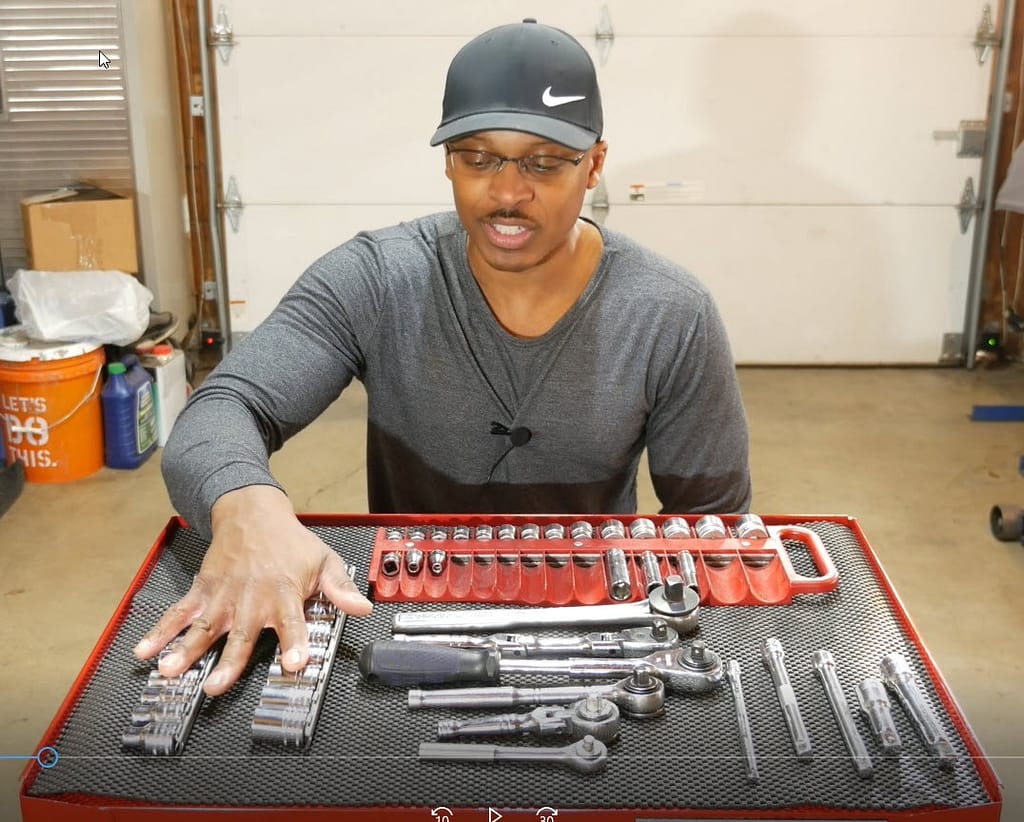
And then the last thing I’m going to cover real quick is just extensions…so, these are different sizes of extensions…we’ve got half inch, three eighths and then also quarter inch. Alright, so definitely something I want to have…these are basic tools when it comes to working on cars…that’s ratchets, sockets and extensions.

Alright, so one tool that doesn’t get a lot of recognition would be breaker bars. I remember when I first started working on cars years ago, I didn’t use any breaker bars at all. I just used my ratchets, especially my half-inch ratchet and I said, “I don’t need these breaker bars…I don’t know what they are…I don’t need them. I’m just going to use my half-inch ratchet. And, of course, what happened at one point is that I broke the square drive on my one of my half-inch ratchets because I was trying to use it as a breaker bar.
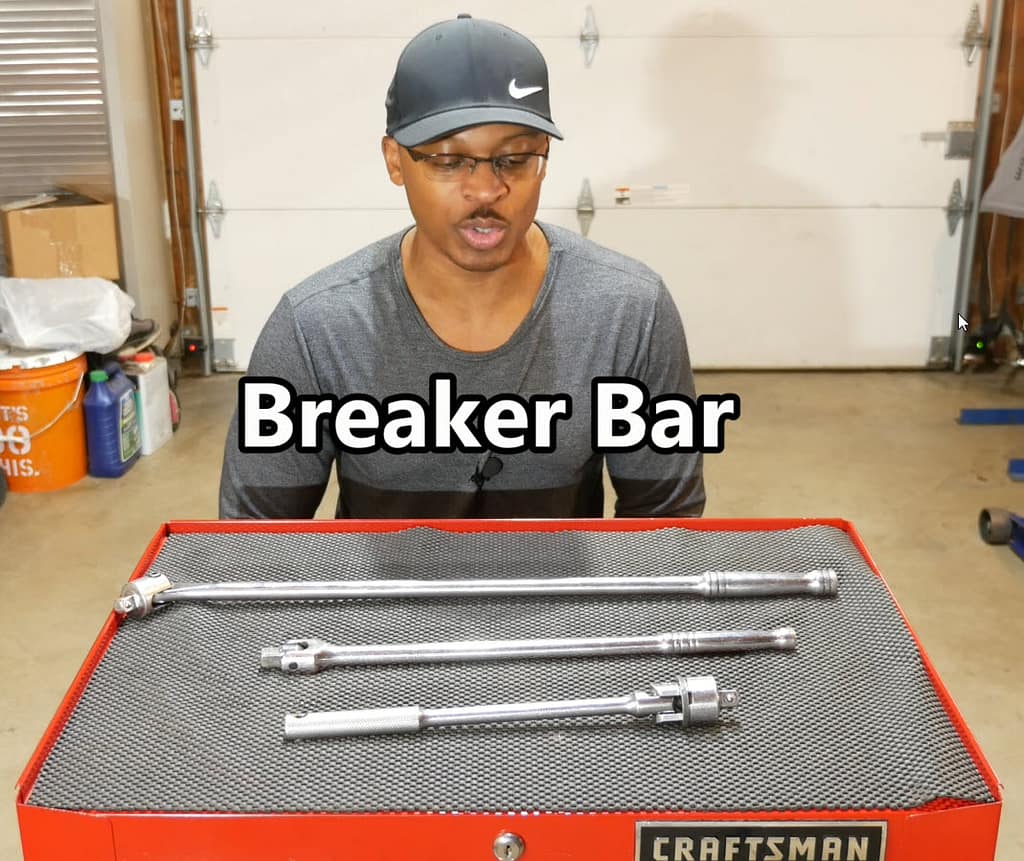
So, definitely breaker bars is something I would recommend something I use a lot…and one thing about using breaker bars, too, as you get older, you start to realize you don’t want to be, you know, wrenching on something really hard and risk damaging your hands or pulling your shoulder out of the socket or something like that. A lot of times, it’s best just to use some breaker bars.
So, I’ve got a few here…this one actually is more of a ratchet, but it’s got a pretty long handle on it…and this one I actually used in the Acura RL strut replacement video. So, this is one gets used a lot.

This is like, I think, about a 17-inch breaker bar. I use this one a lot…and this is about a 25-inch. So, how I typically use breaker bars…I use them on axle nuts, I use them on crank pulley bolts, and I also use them on really stubborn suspension components…and these also come in handy for any sort of engine work that requires, you know, if you’re loosening like a cylinder head bolt, you can use these a lot of times for that kind of stuff. So, definitely something I would have around…something that’s very important to have, in my opinion, is a breaker bar.
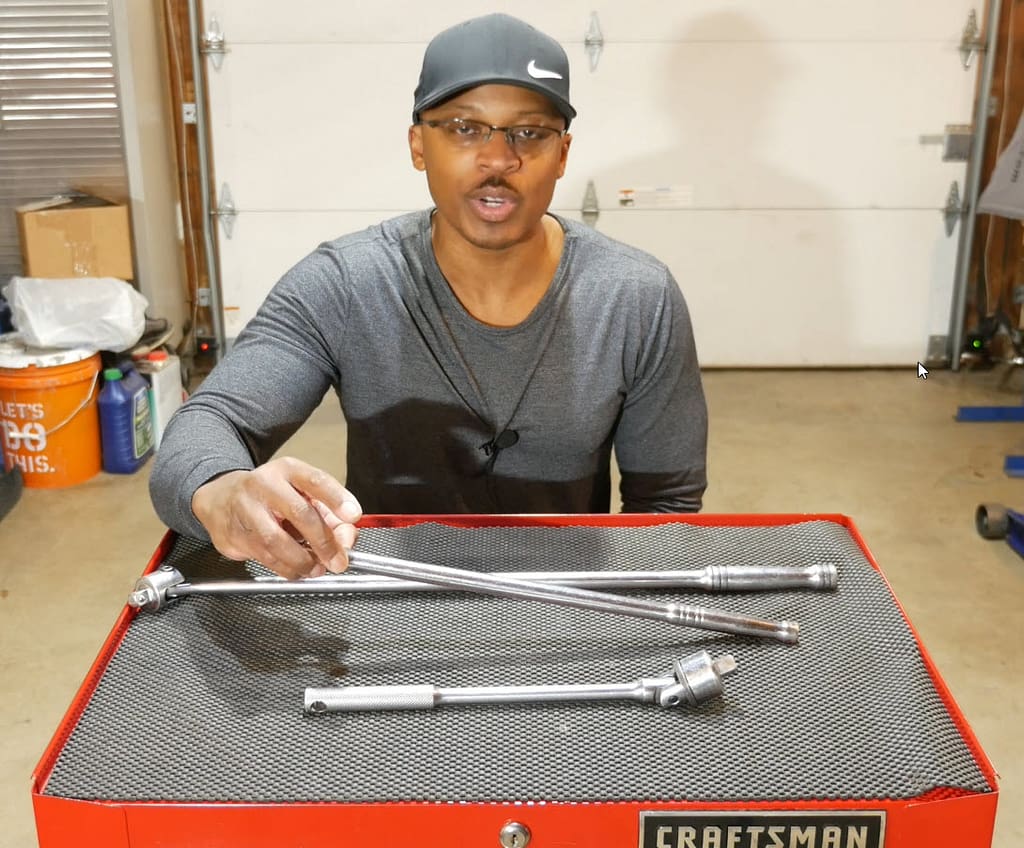
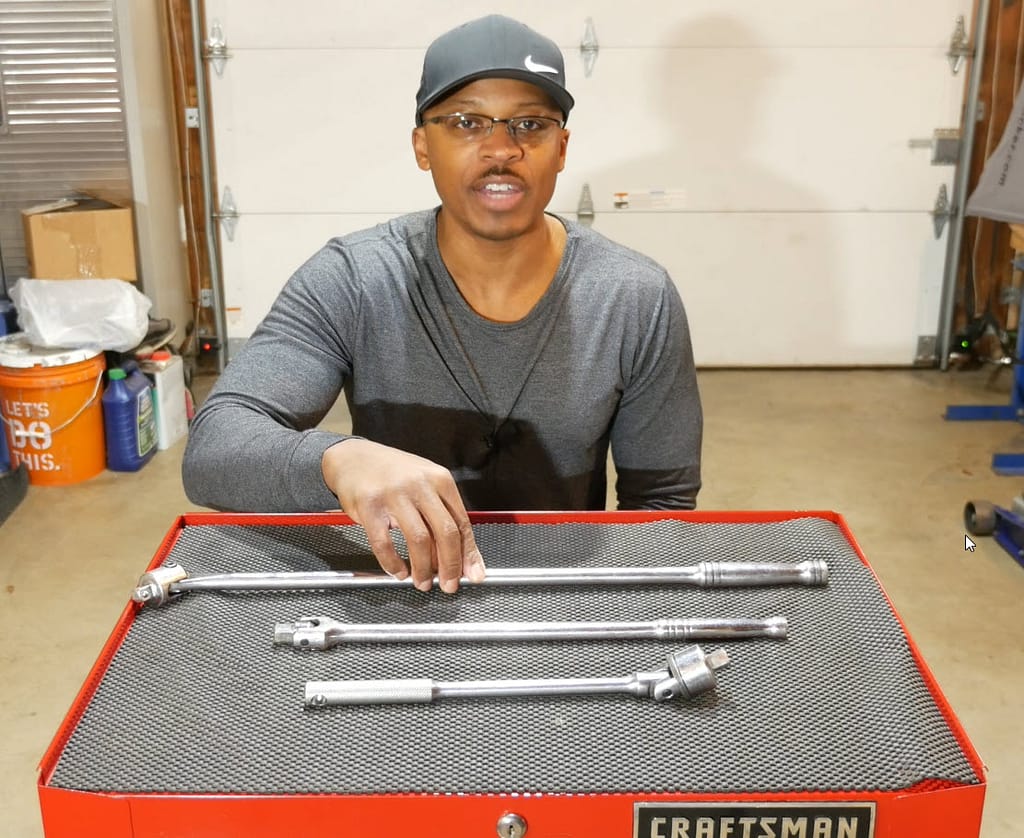
So, a class of tools that I use a lot for tightening fasteners to the proper specifications is torque wrenches. So, I’ve got several here…I’m going to walk through how I use each one of these.
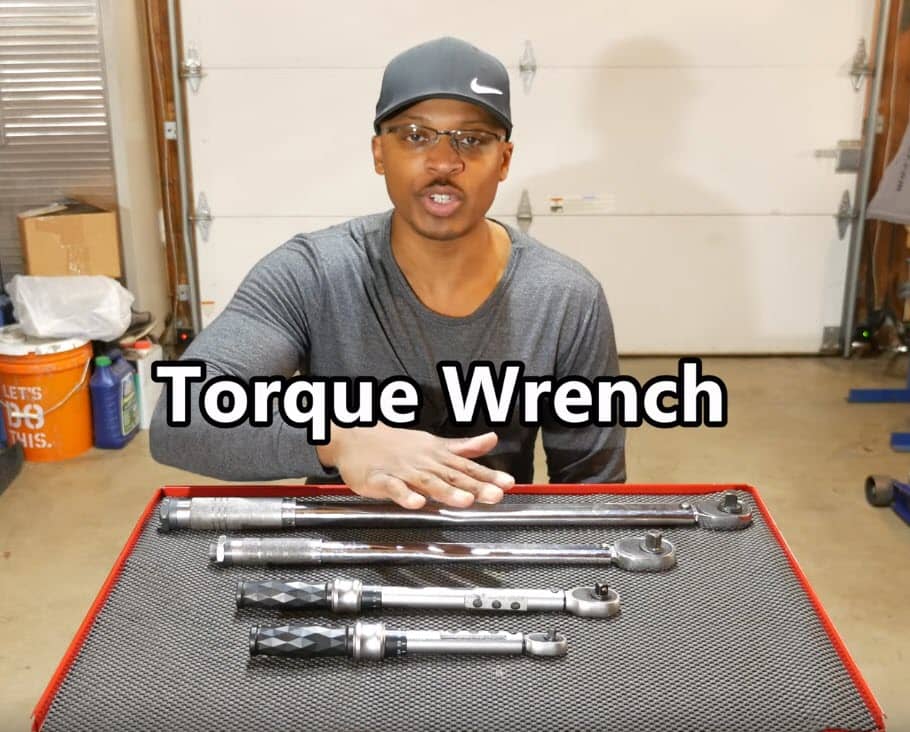
Ok, so I’ve got a quarter-inch torque wrench here…this tightens fasteners in inch pounds…so, I use this a lot on valve cover fasteners, especially, just to make sure I don’t break something…so that’s quarter-inch torque wrench
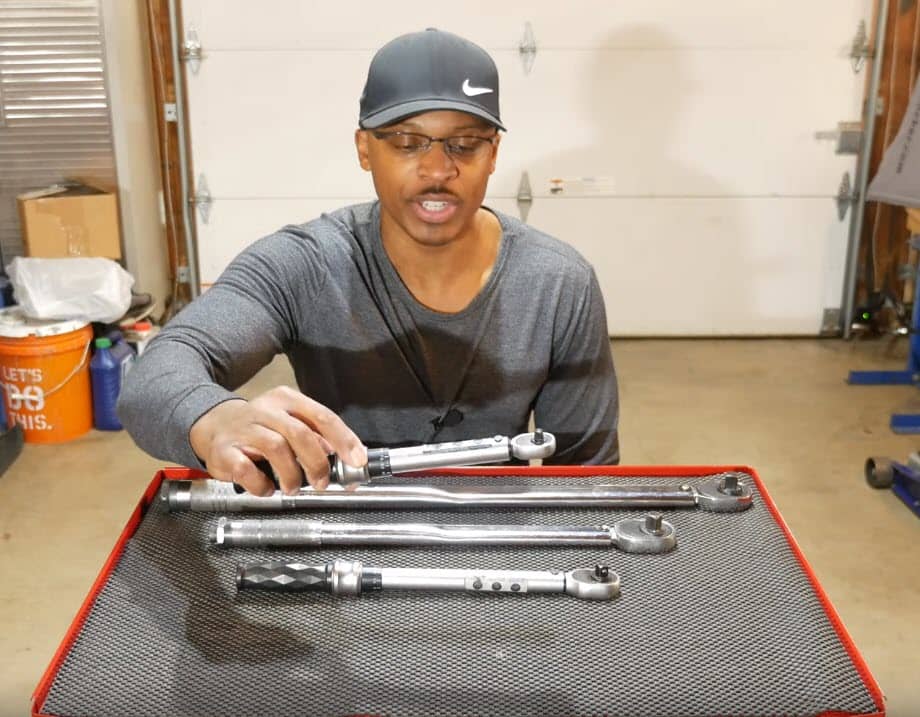
And this is a three-eighths inch torque wrench…this one tightens fasteners in foot-pounds…this is the one I use probably the most out of all the torque wrenches that I have…as you can imagine, I use a 3/8 inch ratchet a lot, so I also use a 3/8 inch torque wrench a lot
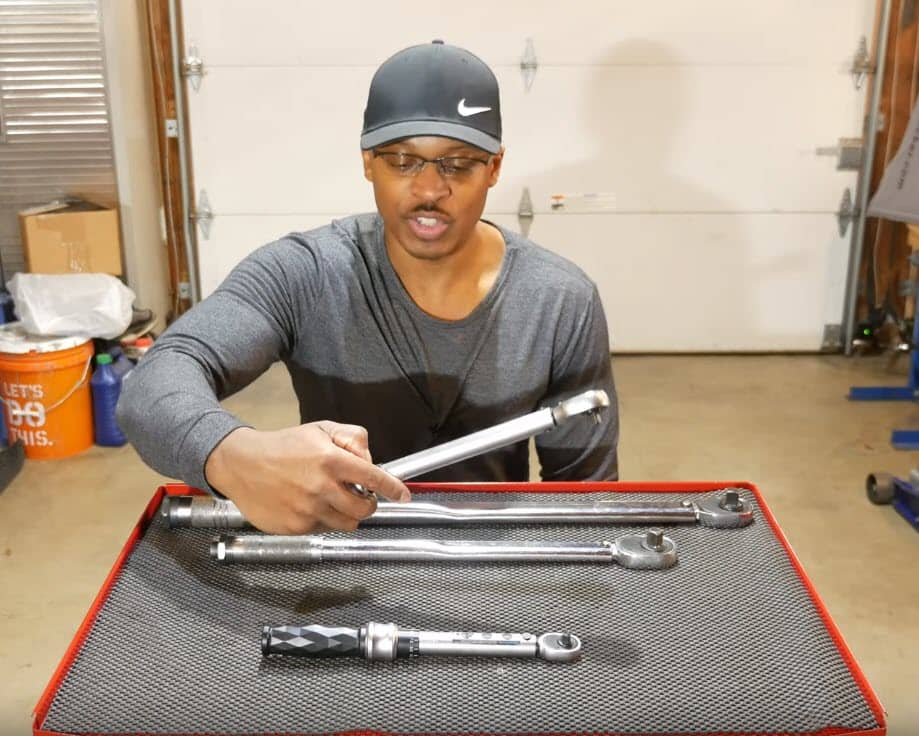
Then we’ve got a half-inch torque wrench…this one goes up to 150 foot-pounds…then I have one other 1/2 inch torque wrench that goes up to 250 foot-pounds…and I actually did a video on repairing this torque wrench that I’ll put a link to somewhere in this video so you can check that out, also. So, that’s torque wrenches.
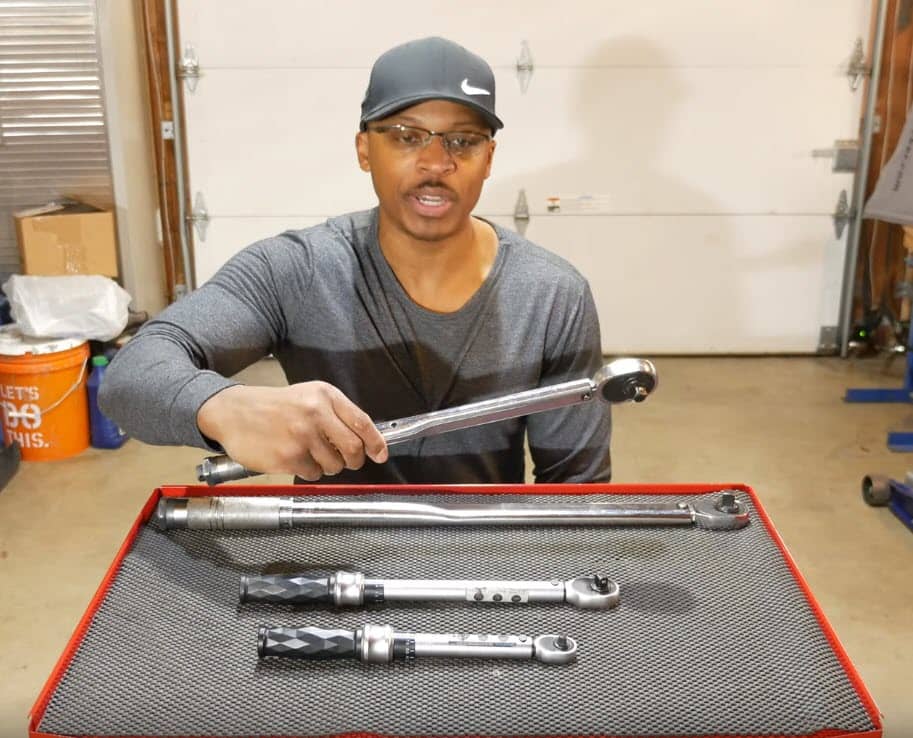

✔️ Capri 3/8″ Torque Wrench ► Check Amazon
✔️ Capri 1/4″ Torque Wrench ► Check Amazon
???? Capri 3/8″ Torque Wrench Review ► https://www.youtube.com/watch?v=wLvjY…
Alright, so I think a given when you’re working on cars is to have a set of screwdrivers…so this is not all the screwdrivers I have, but I just want to kind of go over some of the ones that I do have.
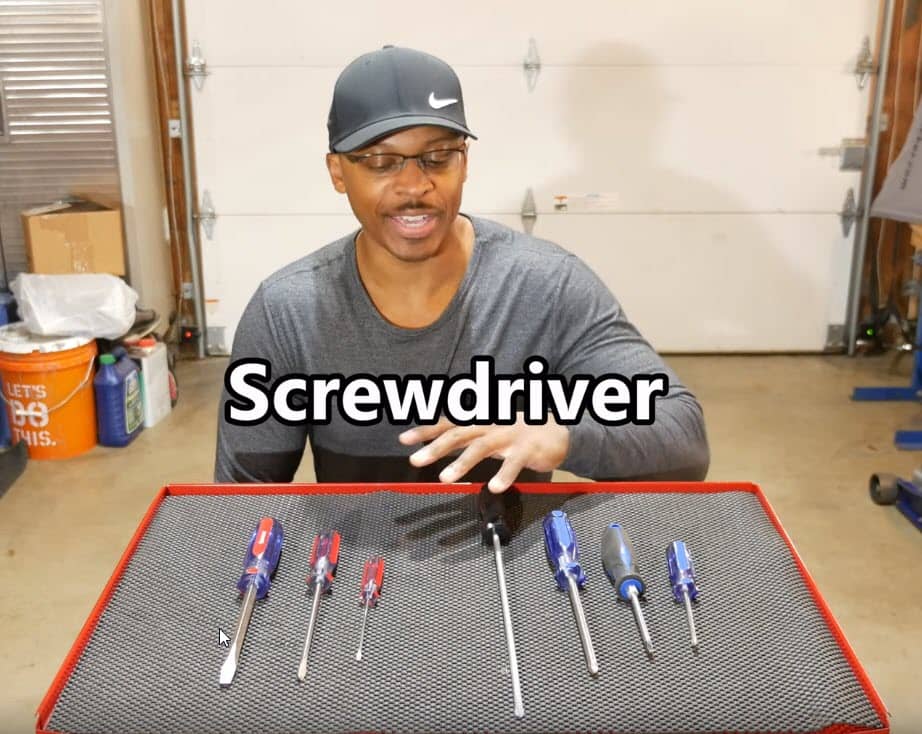
So, I’m gonna start first of all with Phillips screwdrivers…so, I’ve got a number one Phillips screwdriver…this is a number two phillips screwdriver, and this is a number three phillips screwdriver.
So, the difference in these is that they have different size tips…you can see this one’s pretty large, whereas this one’s smaller, and this one’s even smaller
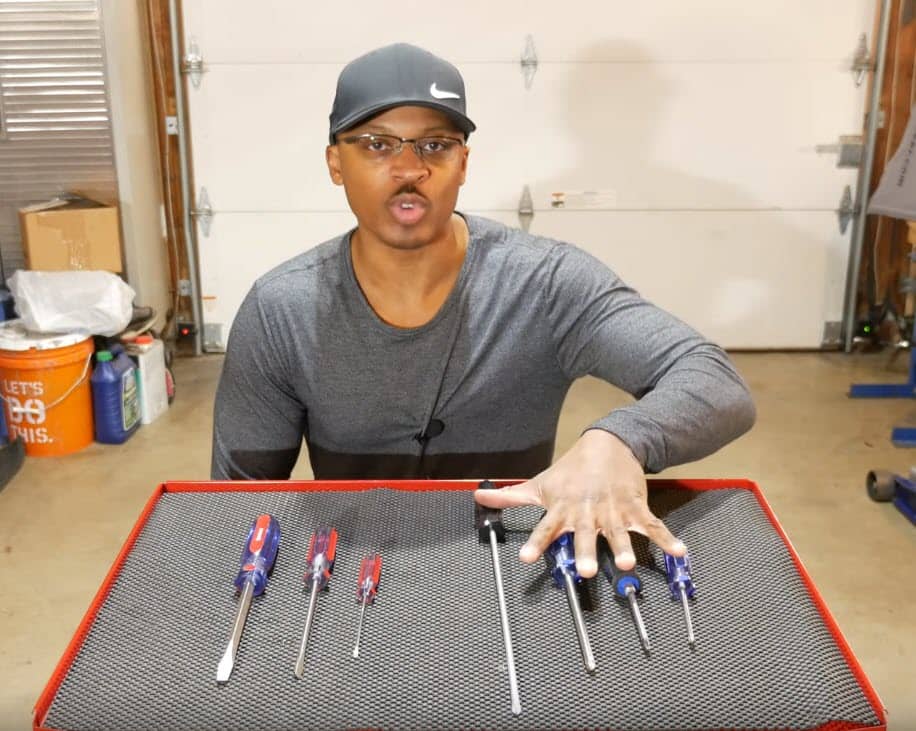
…and then i’ve got this really cool screwdriver that I got from my neighbor…and this is not a typical screwdriver you can find, but it’s really come in handy in a lot of cases when I’ve been working, like for example, in a wheel well and I’m removing a fender cover or something like that…this will reach in there and get those screws out pretty easily. So, I didn’t think I’d ever have a use for this, but it actually has come in handy several times.
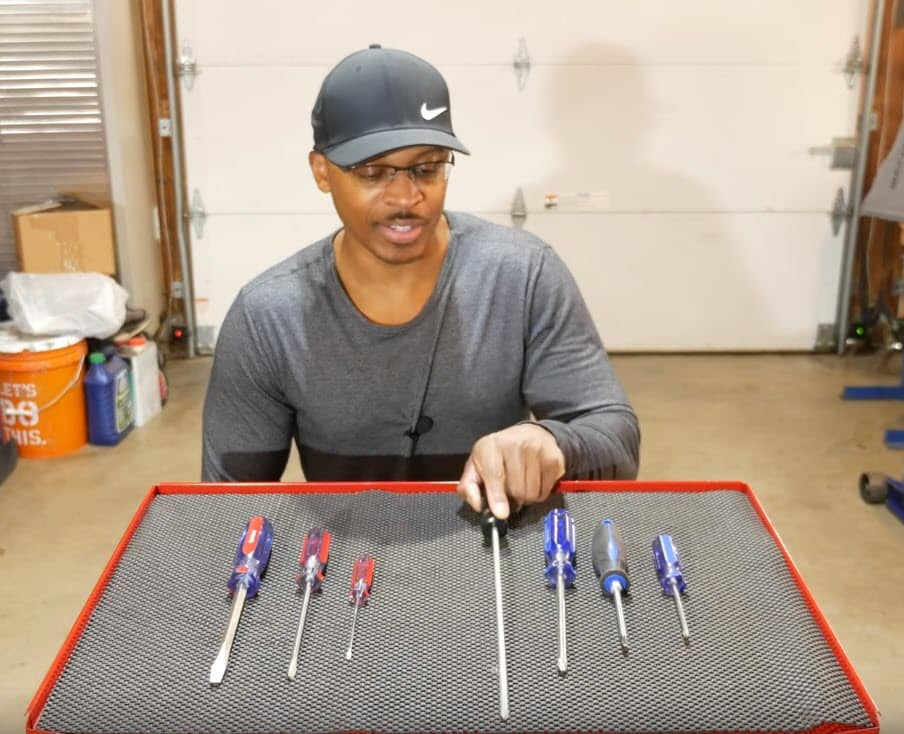
…and I’ve got some flathead screwdrivers…so, I use those on occasion…these are different sizes. You’ve got a small one, medium-sized one and then a really large one…so, that’s screwdrivers.
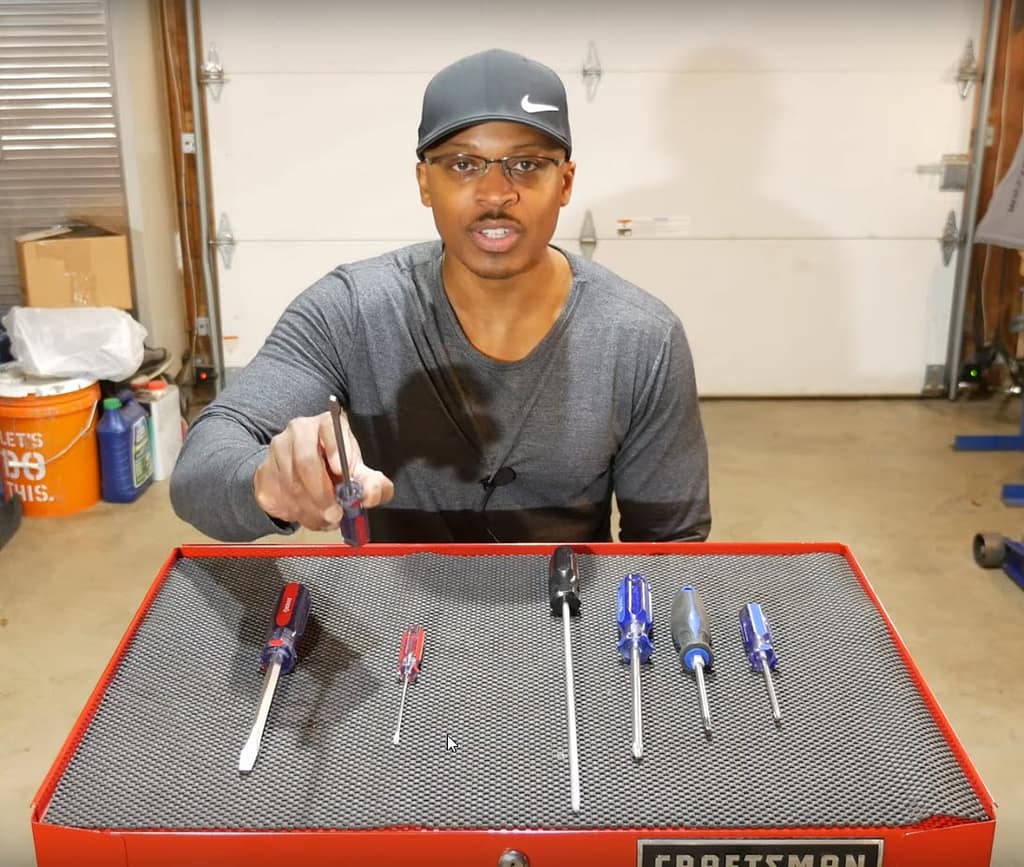
Alright, so let’s talk about box wrenches. I’ve got metrics and I also have standard box wrenches. Now, on the Japanese cars, I use a lot of ten millimeter, twelve millimeter, fourteen millimeter, and also seventeen millimeter box wrenches
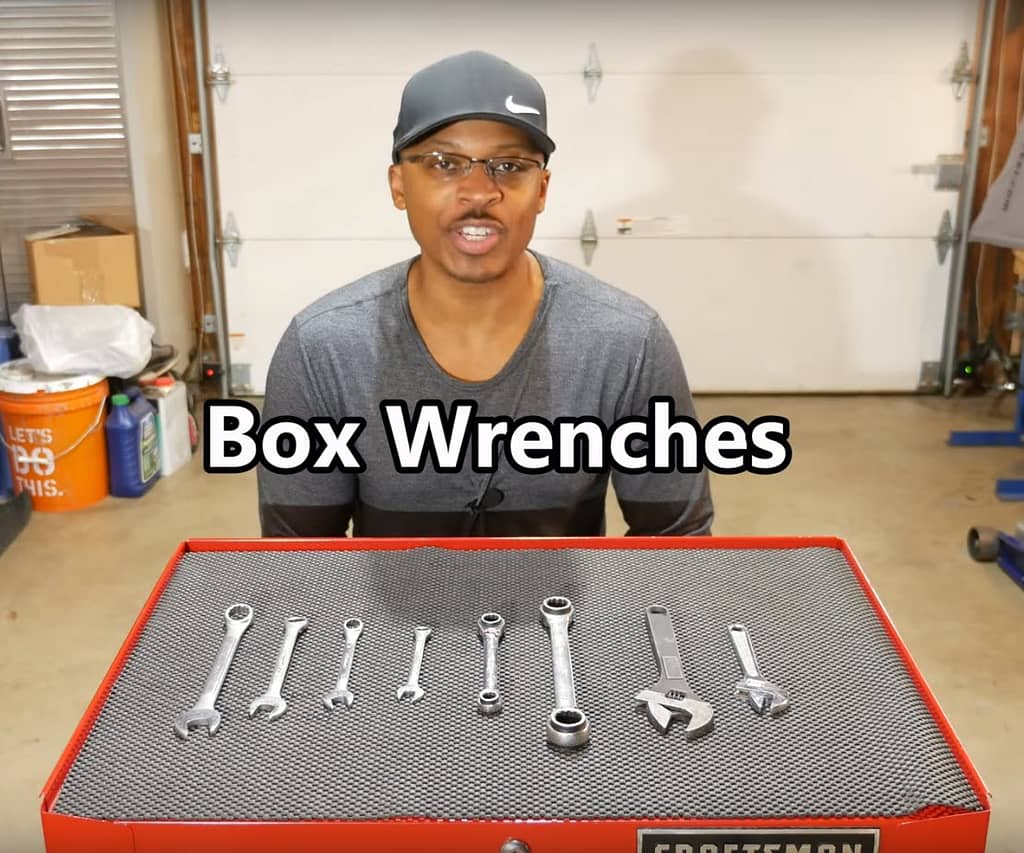
…and then I’ve got this set here…these two actually have four different sizes…these are ratcheting box wrenches. So, this one has an eight, it’s got a ten, and it’s also got a twelve and a thirteen. So, it’s got four different sizes in one. I use this one an awful lot.
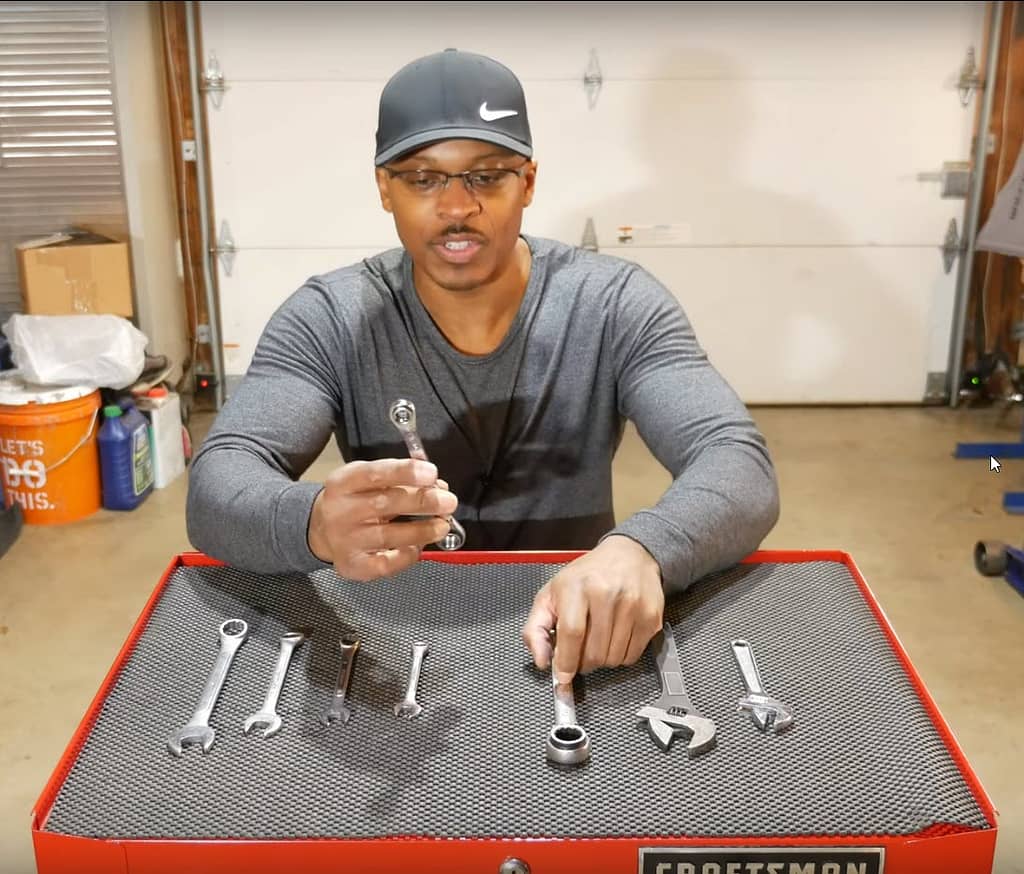
…and then this is the other one that I have…this one has a 14, 17 and 18 and a 19…this one gets used a lot, also. I’ve had these for a number of years, they’ve held up very well, and it’s like I said what’s really cool is they have four different sizes in each one of these wrenches. Now, the one thing you can see the heads a little bit big, so they don’t fit in really small spaces very well. If you’re working on suspension components, especially this one works extremely well.
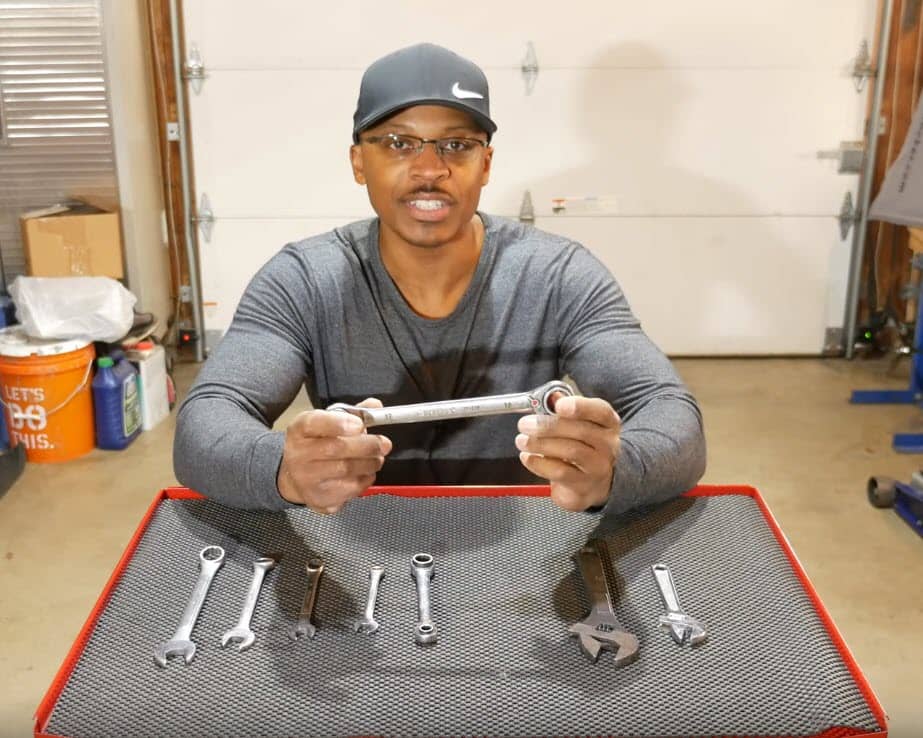
I’m gonna cheat a little bit and I’ll throw in a couple adjustable wrenches, too…so that’s box wrenches.
Alright, so tool I use a lot for removing lug nuts would be an impact wrench. I’ve also used this on axle nuts and I use it occasionally on a crank pulley bolt if that crank pulley bolt is compliant. Otherwise, I have to use a breaker bar instead…but this works off air, obviously, as you can tell and these are definitely great to have around, especially when you’re dealing with tough fasteners…and also it saves your hands the one thing this one is not it’s probably a little bit big for working in really small areas…but when you really want to get a fastener off, like a lug nut or an axle nut, like I said, or a crank pulley bolt, this will work very well
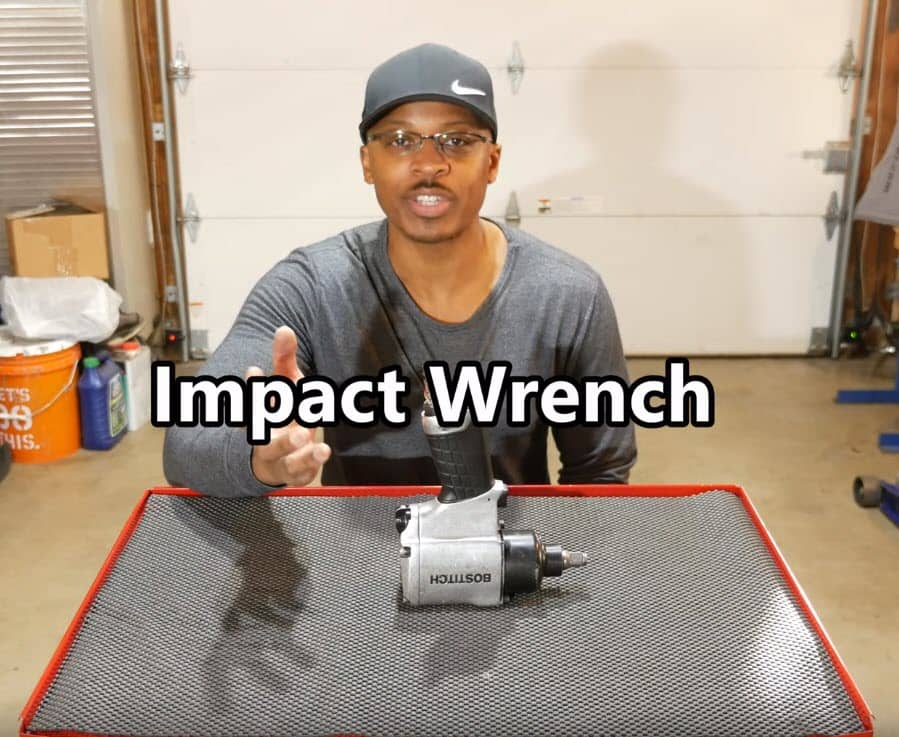
It also works pretty well for tightening things…I don’t use it a lot for tightening things. I might tighten things down initially and then I’ll grab a torque wrench and tighten the fasteners down to the proper specifications…but definitely a great tool to have around is an impact wrench.
Alright, so a tool you’ve probably seen several times in the videos that I’ve done is a multimeter…so, I’ve got a couple here. This one is a cheap Centech from Harbor Freight…I don’t really use this one very much, but I figured it was cheap…why not buy it just to have it around…and maybe throw it in a bag real quick or something.
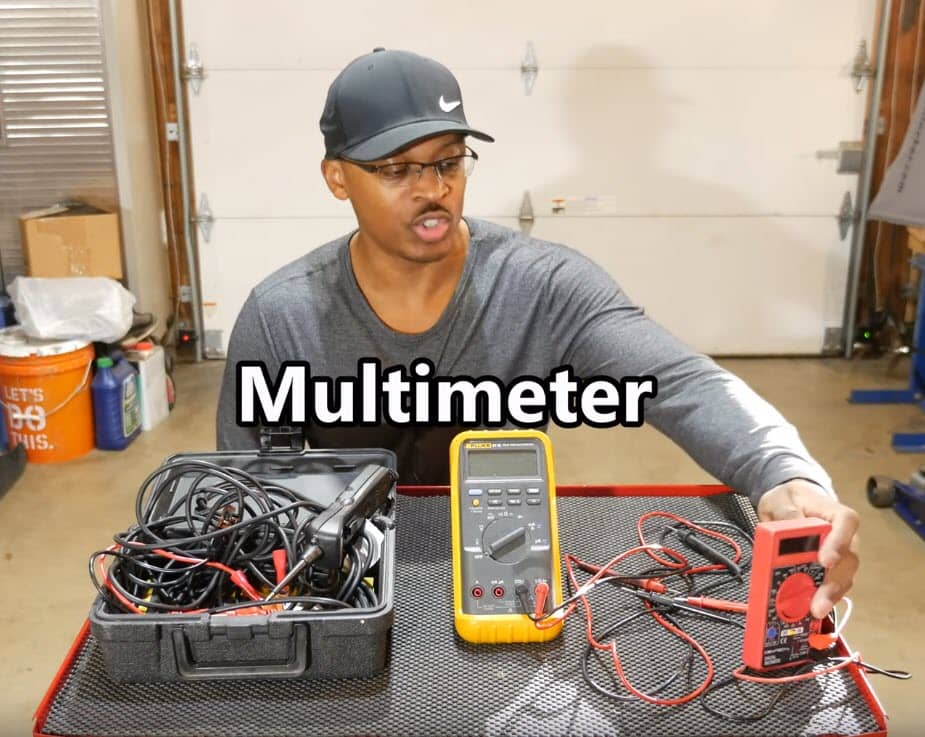
One thing I don’t like about it is that it doesn’t do auto-ranging…so if you want to check the voltage on something you actually actually have to set the range first, whereas this one…the fluke 87-3…this is the one I use the most…this one does auto-ranging. I don’t have to set that range on here…I just start reading and it automatically finds the proper range for reading a voltage or resistance or whatever else I want to read.
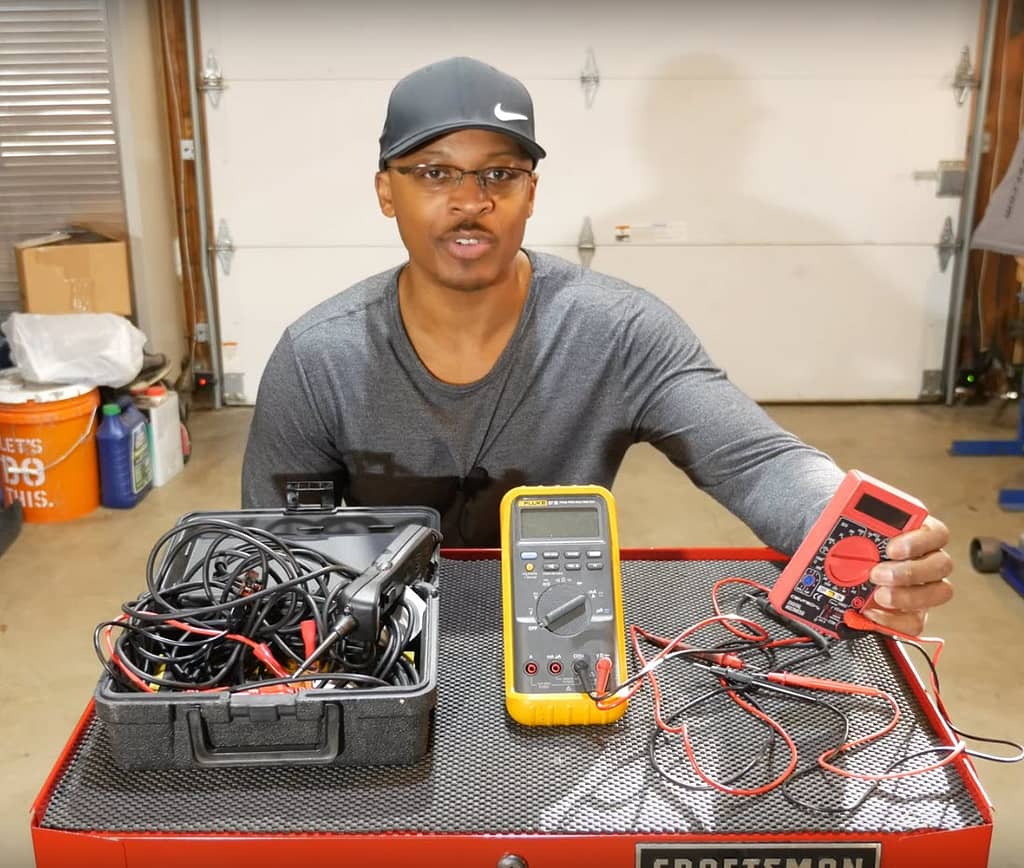
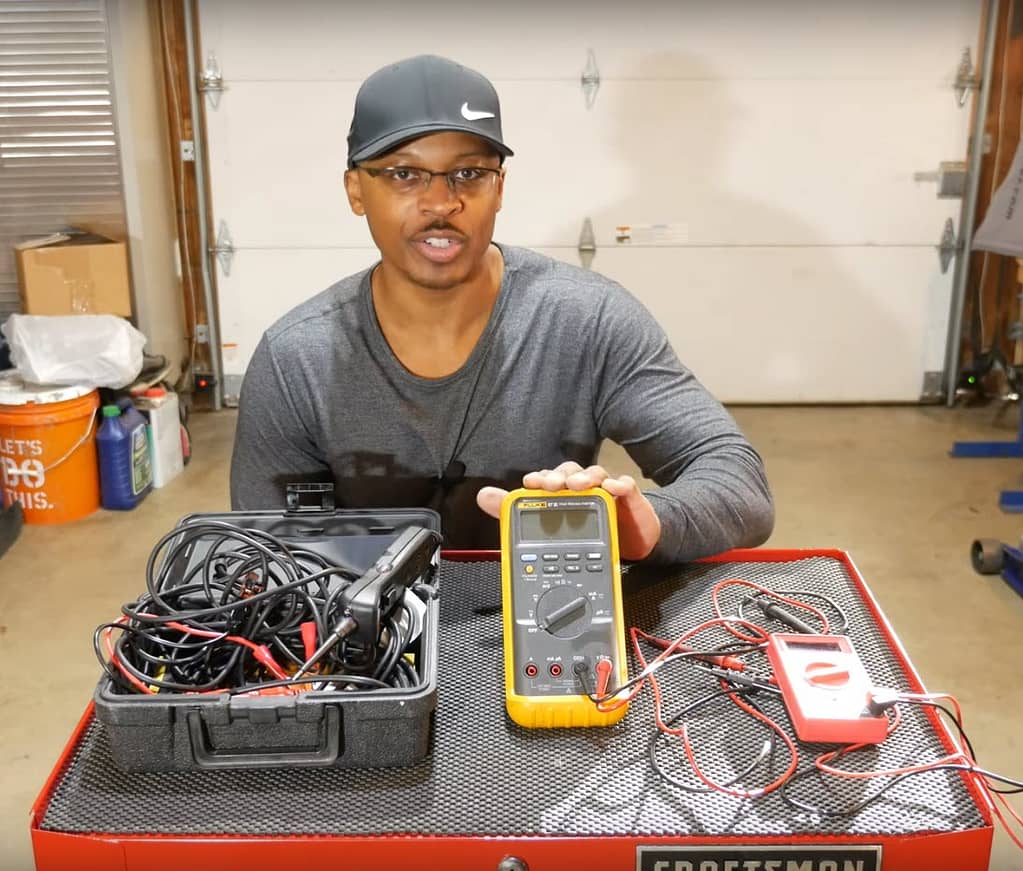
One other tool that I want to talk about that’s kind of in the same family, I would say, would be the Power Probe. So, this tool here…I don’t use it a ton, but I actually had this tool help me diagnose a really obscure issue with the Acura Legend…one that if I had not found that issue myself…if I’d not figured out what was wrong, I would have had to take it to a shop and it probably would have cost me somewhere in the neighborhood about five hundred to a thousand dollars to fix that issue…
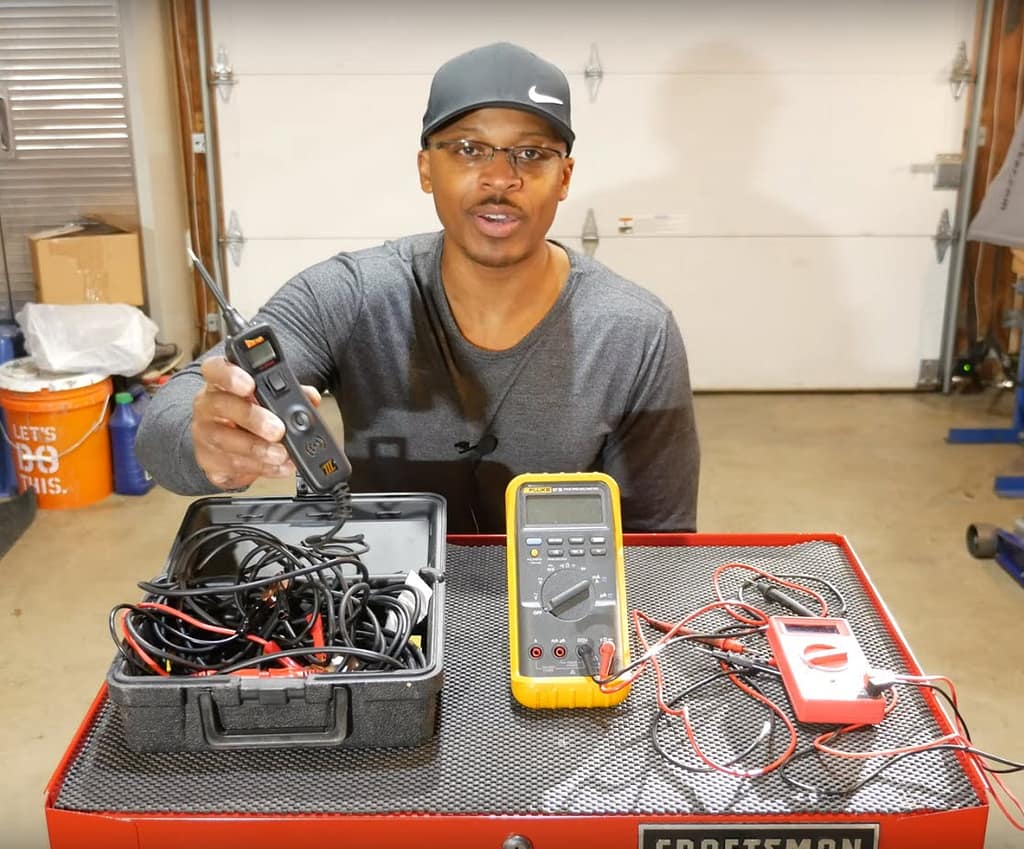
…so, I bought the Power Probe and found that the problem was actually in a connector right below the footrest right in the fuse panel area…just a weird issue, but the power probe was very instrumental in finding that issue…and how this works is what you can do is you can read voltage, but you can also inject voltage into a circuit…and it runs off the cars battery
Now, it’s got a really long cable on it so you can work from the front of the car all the way to the back of the car…so just a great tool to have around is the Power Probe…so, that’s it on multimeters.
✔️ Power Probe III ► Check Amazon
✔️ Fluke 87V (new version of my multimeter) ► Check Amazon
So, a set of tools that’s pretty much a given when you’re working on cars, especially if you want to get under the car or take the wheels off, is a jack and a set of jack stands. So, this is a speedy lift jack that I’ve had for about 15 years…it’s three and a half ton…and the only issue that I’ve had with this jack is that the universal joint’s o-ring developed a leak, so I replaced that…and actually did a video on that, so I’ll put a link somewhere in this video or in the description below and you can check that out if you want.
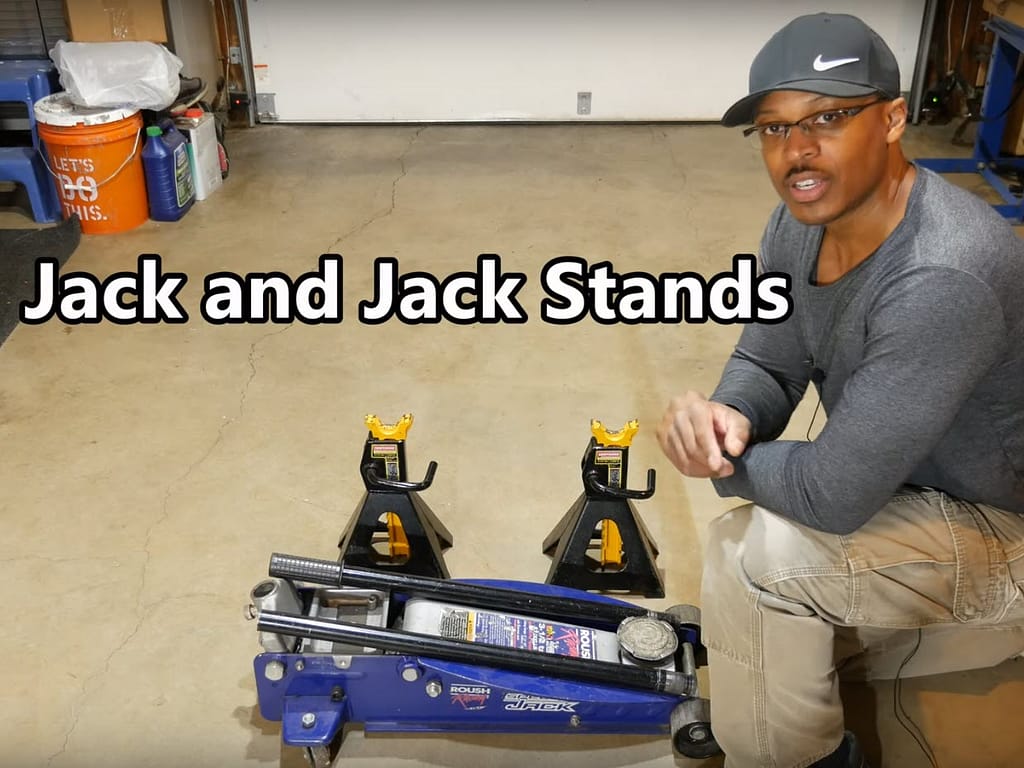
So, these are my jack stands…they’re also three and a half ton…these are craftsman professional…and that rating of jack stands is pretty much perfect for all the cars that I have…so, that’s my jack and jack stands.
Alright, so there you have it. Those are the eight tools I use the most when I’m working on cars.
